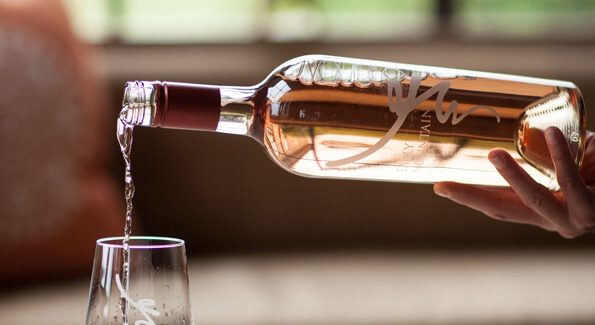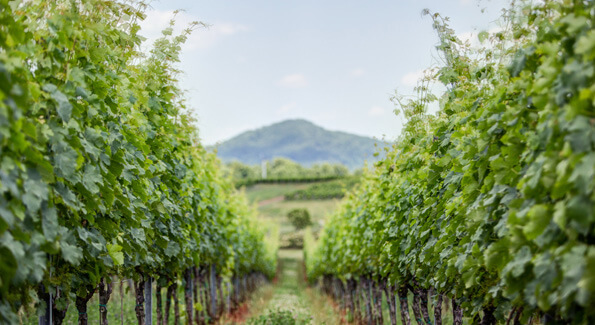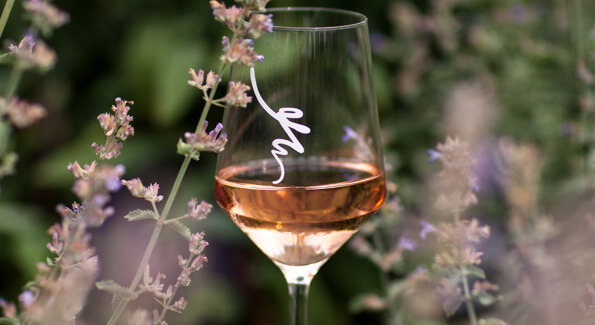Ben Jordan talks about what’s behind their amazing rosé, and why we shouldn’t save it all for springtime.
By Kelly Magyarics, DWS

Early Mountain Vineyards just released their 2015 rosé. Courtesy photo.
Never mind the less-than-springlike weather we’ve been having, I’ve been chilling and uncorking bottles of rosé for weeks now. And I was giddy with excitement to try the most recent vintage of my favorite Virginia bottling, from Early Mountain Vineyards in Madison. Pale salmon in the glass, it’s a restrained wine that has juicy strawberry and lemon, as well as touches of minerality and salinity to keep things interesting (not to mention palate piquing.) I asked winemaker Ben Jordan how the wine got from vineyard to bottle, if there is an emerging style of Virginia rosé, and what he likes to nosh on alongside it (hint: just about everything.)
WL: Talk a little about the grapes that go into your rosé. Do they change from year to year? What does each add to the blend?
BJ: While we are committed to the lightly-hued, energetic style of wine for our rosé, we continue to refine our approach. Merlot has always been the base of our rosé, although we’re increasing the proportion of Syrah moving forward. This year we picked a portion of our lower Syrah block at Quaker Run and gave it a test run. The results were eye opening: the wine emerged with a beautiful color and layers of flavor. Where the Merlot brought plenty of strawberry and floral notes, the Syrah offered a mineral core with compelling savory flavors. It is a subtle addition to the overall blend, but we feel the wine has more dimension and layering, something to return to in a more contemplative way.
Can you give a few tasting notes for this year’s wine?
The pale, pink salmon color introduces the piquant strawberries and peaches that follow in the aromas and flavors of this wine. On the palate it oscillates between effusive flower and fruit notes and a tactile, mineral core, allowing it to walk the line between subtlety and playfulness.
What was the weather like last fall when you were harvesting?
2015 began with very cold winter temperatures and early spring showers. Though the summer saw normal levels of precipitation, the latter portion of the growing season was warm and dry, leading to significant rain events later in the fall. The fruit for rosé was picked prior to major rain events, resulting in ideal juice for the wine.

The grapes for their rosé were picked last fall before some rain events. Courtesy photo.
What makes a great rosé?
For our style, it is growing and picking specifically for rosé. We work in the vineyard with rosé in mind, and pick the grapes earlier. This allows us to retain the freshness and natural acidity, while being able to avoid the more ponderous notes of riper red fruit. In contrast, when you pick fruit for red wine you are looking for tannin and concentration – neither of which translate into fresh, energetic rosé.
Is there a signature style for rosé in Virginia?
No. There are several Virginia winemakers taking different approaches to rosé and making wines all along the spectrum from light, crisp and fruit-forward to dense, bold and deeper in color. Stone Tower Vineyards in Loudoun Country makes a fuller bodied, deeply hued rosé that lends itself to more robust pairings. Matthieu Finot, the winemaker at King Family Vineyards in Crozet, makes their “Crosé” from primarily Merlot. It has a darker color but leans toward the crisp and refreshing style.
What do you like to enjoy alongside?
It’s hard to find a food that doesn’t go with this rosé – it’s fresh, crisp, dry style is really an ideal pairing for just about any any dish. Right now, we’re enjoying the fresh, vibrant flavors of new spring produce with our rosé. As we move through the year, it will be versatile enough to pair with fried chicken and burgers at summer picnics as well as be our go-to wine for all sorts of take-out. We only made 800 cases of this wine, but if it lasts through the late fall it will also be on our Thanksgiving table. In general, rosé is a wine that works well across cuisines, preparations and occasions.

Rosé wine pairs with just about anything–even Thanksgiving turkey. Courtesy photo.
Are there any misconceptions about drinking pink?
In years past, it used to be that most people thought rosé was a sweet, unsophisticated wine, but you see that less and less these days. The misconception that the industry is probably working the hardest to change is that it should only be drunk in the summer, when really it’s versatile for drinking at any time of the year. If there ever were a wine for all people to keep on hands at all times, that’s rosé.
Kelly Magyarics, DWS, is a wine, spirits and lifestyle writer in the Washington, D.C. area. She can be reached through her website, www.kellymagyarics.com, or on Twitter and Instagram @kmagyarics.
